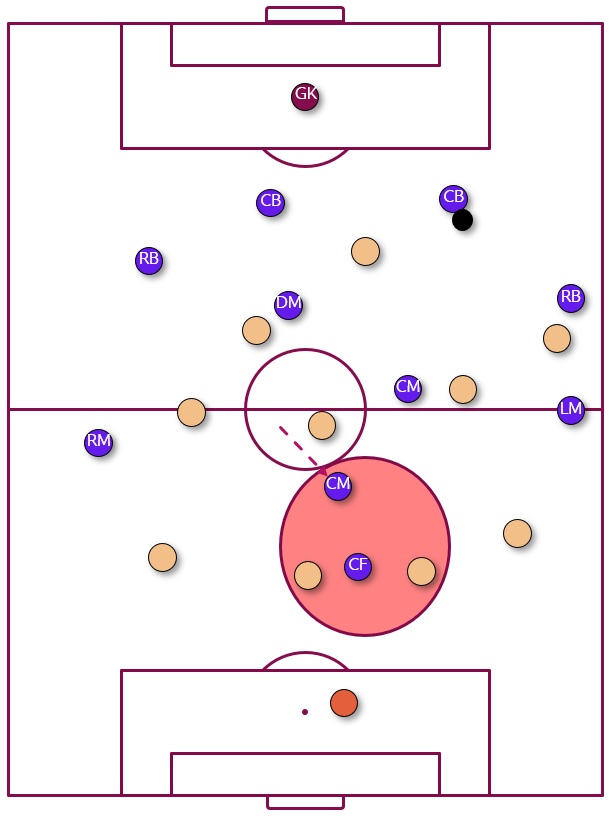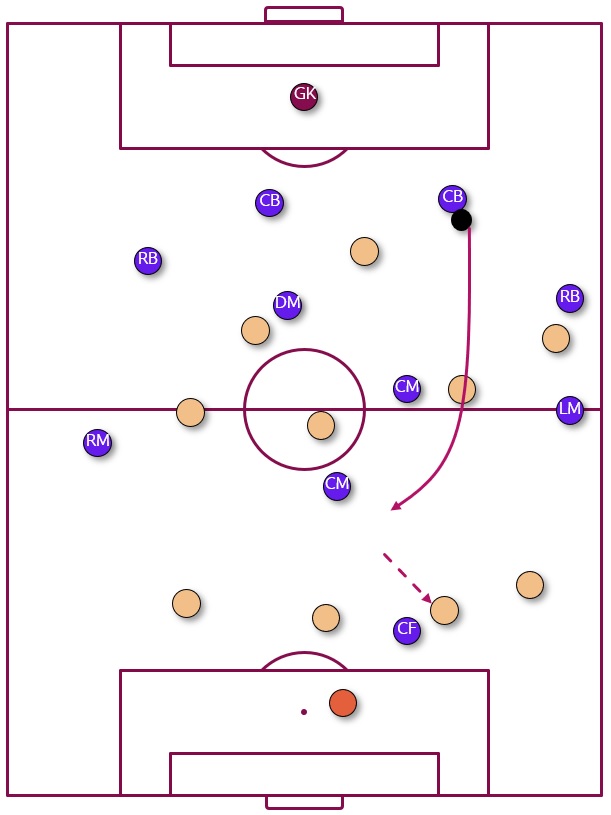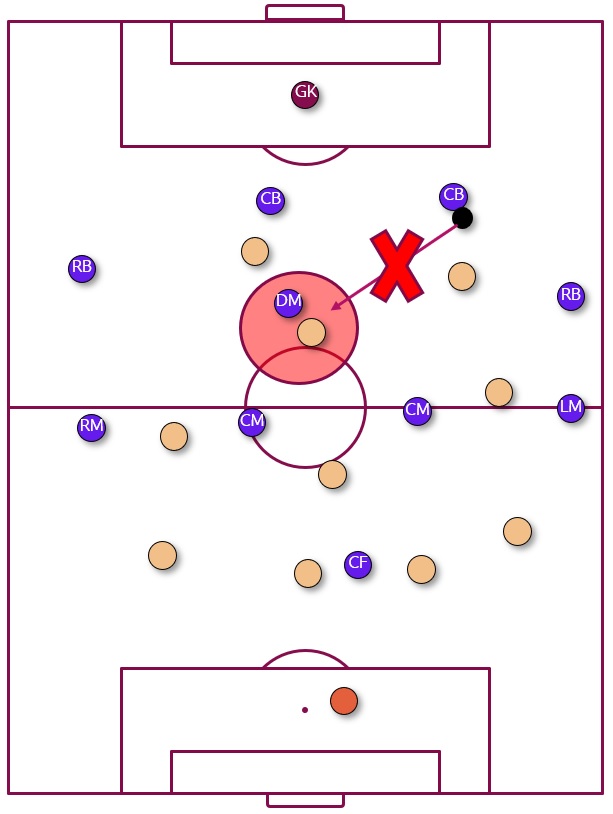The 4-1-4-1 formation in football provides a balanced mix of defensive strength and attacking potential. It begins with a back line of four defenders, comprising two center-backs and two full-backs. Positioned just in front of the defense is a solitary defensive midfielder, who acts as a protective shield. Ahead of them is a quartet of midfielders, featuring two central and two wide players, who contribute to both defensive and offensive play. This setup is capped off with a single striker leading the attack.
This setup provides a unique balance that can adapt to various in-game situations. It can be used to increase scoring opportunities and play a total football game, or as a defensive strategy against stronger and more skillful teams.
Disclosure: Please note that some of the links below area affiliate links and at no additional cost to you I will earn a commission. Know that i only recommend products services and brands i have personally used and stand behind. When you use one of my affiliate links, the company compensates me, which helps me run this blog and keep my in -depth content free of change for readers (like you). Read our disclosure for more info.

Elevate Your Coaching Journey
Are you ready to take your coaching career to the next level? Look no further than FootballCoach365, your ultimate destination for top-notch coaching material.
Join the Coach’s Corner today and experience the transformative power of proper planning, training and coaching.
The 4-1-4-1 is a formation in football coaching that offers multiple advantages, with its main one being the flexibility to transform into another formation with simple movements. It is used, depending on their manager, by elite teams from Premier League such as Manchester United, Manchester City as well as other TOP 5 league’s teams such as Bayern Munich.
From time to time, managers have used the formation to increase their defensive stability especially when they had in their squad a physically strong defensive midfielder such as Claude Makelele. Jose Mourinho, Sir Alex Ferguson and Mikel Arteta are only a few coaches who have used this soccer formation to increase their tactical flexibility, enhance their football tactics and provide a strong defensive cover by using a strong player in the defensive midfield position in front of the back line.
Table of Contents

Origins of the 4-1-4-1 Formation
The 4-1-4-1 formation is not entirely different from the more familiar 4-3-3 formation. Both feature a back four and a single defensive midfielder, often referred to as a “pivot” or “number six.” The key distinction lies in the positioning of the wide players. In a 4-3-3, the wingers operate higher up the pitch, often in line with the central striker, creating more space for wide movements. Conversely, in a 4-1-4-1, the wide midfielders are positioned deeper, closer to the central midfielders and full-backs.
Historically, the 4-1-4-1 formation has been utilized primarily in a defensive capacity, akin to the 4-5-1 formation. The main difference between these two setups is the staggered nature of the central midfielders in the 4-1-4-1, compared to the flat midfield line in the 4-5-1. When defending, the single defensive midfielder in the 4-1-4-1 protects the space between the lines and seldom joins the midfield four.
The transition from the 4-2-4 to the 4-3-3 formation by Brazil during their 1958 World Cup triumph is often cited as an early example of the evolution of the 4-1-4-1. As coaches began to favor the 4-3-3 for its attacking versatility, the defensive shape often morphed into a 4-1-4-1 when the wingers dropped back to help in defense.
MARCELO BIELSA – ATTACKING TACTICS AND SESSIONS

Learn from one of the most respected and admired coaches in modern football
- Exciting and Expansive Attacking Tactics
- High Tempo Football
- Constant Off the Ball Movements
- Moving the Ball to the Free Player via Link Players
- Creating Numerical Advantages in Key Areas of the Pitch
- Quick Combination Play
- Constant Pursuit to Exploit Potential Gaps and Spaces
In-Possession Responsibilities
The 4-1-4-1 formation is primarily defensive, but it can transition into a 4-3-3 during extended attacking phases. The center-forward in this formation has dual responsibilities: scoring and maintaining possession. By holding up the ball, the center-forward enables the wide midfielders and central midfielders to push higher up the pitch, effectively transforming the formation into a 4-3-3. Employing a false nine, who drops deeper to link play, can also be effective in this setup.
The central midfielders in a 4-1-4-1 are crucial for creating offensive opportunities. They can make penetrating runs, often positioning themselves as number tens around the central striker. The starting positions of the midfield line behind the single center forward are initially a disadvantage because they cannot fill the gaps between the lines. This minimizes the team’s passing options and gives the defensive line the opportunity to better organize, to effectively mark the single forward and maintain compactness.

The 4-1-4-1 formation does not offer a natural passing option between the opponent’s defensive and midfield lines. The defensive line can adjust its position to better defend any ball behind it while simultaneously tightly marking the single center forward.

One solution is for one of the central midfielders, typically the one on the weaker side, to push up between the lines and play as a number 10. This can create a challenge for the defensive line, as the center backs may struggle to step up without leaving gaps that the center forward could exploit in a one-on-one situation.

Against a forward run behind the back line, the whole defensive line will most probably drop and that will create even more space between the lines where the midfielder will be able to receive the ball.

Another challenge that the formation has is the single pivot. Against teams that apply high pressure and allocate one player to follow the defensive midfielder, there is a limitation in the attacking phase due to the unavailable passing options behind the opponent’s first line of pressure.

A suitable solution is for one of the central midfielders can drop deeper to aid in build-up play, forming a temporary double pivot. This flexibility allows the central midfielders to either penetrate with forward passes or dribbling or maintain possession to facilitate a transition into a different shape.

Wide midfielders in a 4-1-4-1 are pivotal during counter-attacks. Positioned deeper than traditional wingers, they must progress the ball with dribbles and ball-carries, providing crosses for the center-forward and supporting midfielders. Their deeper starting position also allows them to move inside, creating additional attacking options.
Full-backs in a 4-1-4-1 offer secondary support in wide areas, engaging in passing combinations with the wide midfielders and adapting their movements based on the positions of the midfielders ahead. Center-backs in this formation are responsible for delivering forward passes into the midfield or wide areas and can also drive into midfield if space allows.
Out of-Possession Responsibilities
Defensively, the 4-1-4-1 formation is highly structured. The center-forward presses the opposing center-backs, typically directing play towards the touchline. Alternatively, the forward can drop deeper to “cover shadow” the opposition’s pivot, allowing the central midfielders to form a zonal defensive screen, blocking central progression.
The central midfielders in a 4-1-4-1 can employ either player-oriented marking or zonal coverage. They may step up to support the forward’s press, helping to direct the play towards the touchline. The single pivot between the lines has a vital role in screening, covering, dueling, intercepting, and protecting the central defense.

Wide midfielders support the central midfielders and full-backs by narrowing their defensive positions. They track opposing full-backs’ forward runs, often forcing the play outward and using the touchline as an additional defender. Once the play is directed toward one side, they assist the full-back in blocking crosses and cut-backs. The weak side wide player shifts inside to help the defensive block retain its compactness and deny the opponents the switch of play through the center.
Center-backs in a 4-1-4-1 benefit from the protection offered by the single pivot, allowing them to focus more on covering the spaces behind. They may need to step forward to intercept passes to the opposing center-forward, preventing them from turning. In a more reserved block, the back four maintain compactness, shifting across the pitch as the ball moves, ready to drop back or push forward as needed.
Benefits of the 4-1-4-1 Formation
The 4-1-4-1 formation offers several advantages:
- Central Compactness and Protection: The shape provides numerical strength in central areas, making it difficult for opponents to progress through the middle.
- Defensive Versatility: Teams can easily switch between low, mid, and high blocks, adapting to the flow of the game.
- Flexibility in Transition: The formation can seamlessly transition into various attacking shapes, such as a 4-3-3, 3-2-4-1, or 4-2-3-1, depending on the in-game requirements.
- Effective Counter-Attacking: With well-coordinated forward runs and quick transitions, the 4-1-4-1 can be a potent formation for counter-attacks.
Disadvantages of the 4-1-4-1 Formation
Despite its strengths, the 4-1-4-1 formation has some drawbacks:
- Inviting Pressure: The deeper positioning of players can invite pressure, requiring high technical skills to retain possession under duress.
- Increased Defensive Responsibilities: The absence of an additional player in midfield means those ahead of the pivot must be more defensively vigilant.
- Reduced Counter Attack Threat: The deep positioning of wide midfielders can limit their counter-attacking potential.
- Isolation of the Center-Forward: The lone striker can become isolated, necessitating early support from teammates, which can compromise defensive compactness.
Conclusion
The 4-1-4-1 formation is a versatile tactical setup that balances defensive stability with offensive potential. Its origins trace back to tactical evolutions in football history, and it has been employed effectively by various top-tier managers. While offering significant advantages in terms of central compactness and flexibility, it also presents challenges that require careful management. Overall, the 4-1-4-1 remains a valuable formation in the modern footballing landscape, providing teams with the tools to adapt to different phases of play

